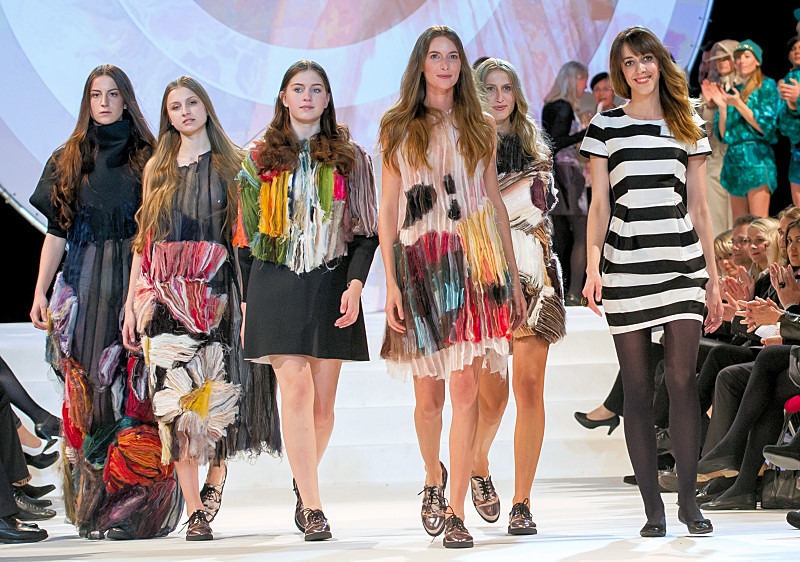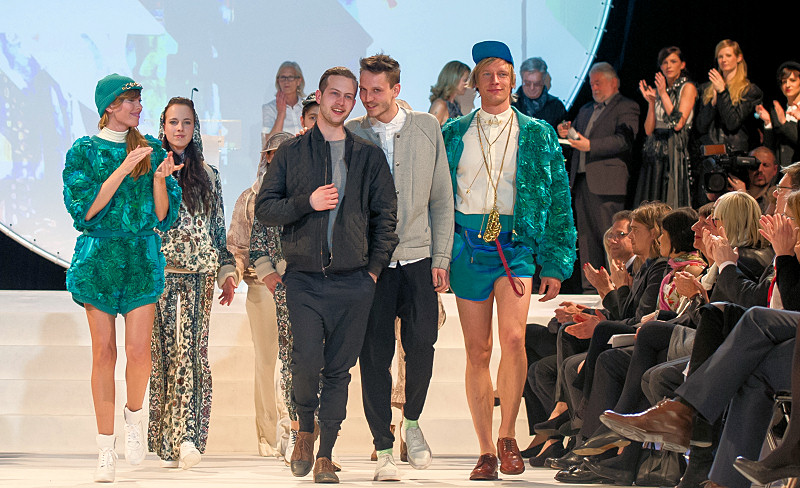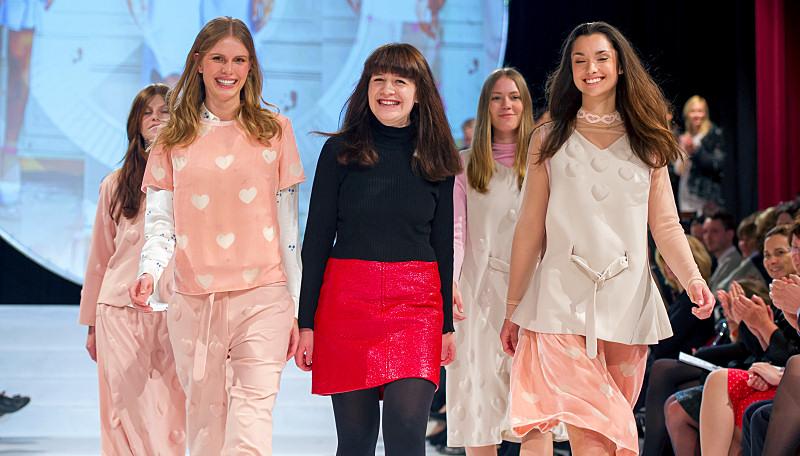For the 8th time, the APOLDA EUROPEAN DESIGN AWARD was given in Apolda on 5th April 2014.
The prize winners were announced during the gala event at the guildhall of Apolda, on the occasion of which the fashion elite of Europe had gathered there. All registered collections were presented in a fashion show. „The registered works are way more innovative, exciting, refined and thought through to the end than three years ago! I can see considerable development,“ says Iris von Arnim, knitting designer from Hamburg and head of the jury of the APOLDA EUROPEAN DESIGN AWARD 2014, at the jury-get-together in February 2014, when the award winners were chosen. „The level has risen considerably. Taking a decision has been very difficult for me this year.“
The Award Winners
The 1st prize of the APOLDA EUROPEAN DESIGN AWARD 2014 – including €12,000 – went to Lilla Cséfalvay from Maholy-Nagy University in Budapest.

“This eclectic and chiselled environment had always been very close to my heart,“ explains the award winner of the 1st prize her source of inspiration for her impressive work “VANITAS SYMBOLS – THEN AND NOW“
What is meant are vanitas pictures of Dutch artists of the 17th and 18th century. The typical vanitas motives like skulls, old folios, sandglasses or withering flowers do not frighten her, they inspire her.
In the documentation of her work she impressively visualizes the way from concrete pictures of old artists to contemporary fashion. The results are rich textile surfaces and dresses, which preserve and re-enact the masterful of its origin.
The 2nd prize of the APOLDA EUROPEAN DESIGN AWARD 2014 – including €8,000 – went to Markus Binder and Emil Maria Beindl from Universität für Angewandte Kunst Wien.
DEMELRAVE

Who does not know the famous K&K confectionary Demel in Vienna with its typical charm of former times? Hard to imagine that the squiggly sweet wallpapers and interior design can be inspiration to cool clubwear.
Both winners of the 2nd prize, Markus Binder and Emil Beindl from Vienna, master this task so superbly that they delighted the jury with their hybrid collection.
In this case, hybrid means the connection of entirely opposite elements: the confectionary sweetness blended with shapes and habits of the techno culture. The result is a sports and clubwear collection which is alienated by decorative elements and thus very much hits the zeitgeist.
The 3rd prize of the APOLDA EUROPEAN DESIGN AWARD 2014 – including €6,000 – went to Ilona Hackenberg from Aalto University School of Arts, Design and Architecture Helsinki
“TAGM“

Little girls are said to be addicted to pink in all shades. There are not many books and essays warning against the so-called Lillifee-cult. It is therefore very self-confident to make hearts the central symbol of a collection. Emancipated women like to distance themselves from that – from pink as well as from hearts.
Our award winner succeeded in combining seemingly irreconcilable opposites in a modern womenswear collection.
With confidence she avoided the pitfalls of kitsch and kitty sweetness and created a feminine and romantic look with a modern casual feeling that allows even cool women to have a new sight on pink and little hearts.
Even though the jury has made their choice on Valentine's Day I can assure that it was only the conceptual consequence they were convinced by.
For her unusual work, the jury has given a Special Award – including €4,000 – to Lisa Heigart from Hochschule Trier, subject Fashion Design.
Experimental Design
The jury has given a special award for experimental design. The concept of that work is “UPCYCLING“.

Wikipedia defines that term as follows: “Upcycling is the process of converting waste materials or useless products into new materials or products of better quality [...][1]“
This is what Lisa Heigart has done with her work “Die fehlende Hälfte“. As she explains, she has braided, knitted and crocheted bicycle tubes that had become dirty and had already been unlovingly disposed, and has made ruffs and jewellery of the brittle material. She has given them a new sense and a new function with her creativity and technical skills – and what's more, she has given them beauty.
[1] https://en.wikipedia.org/wiki/Upcycling

